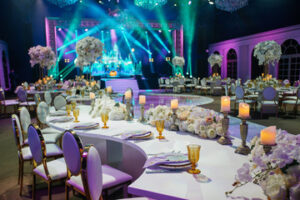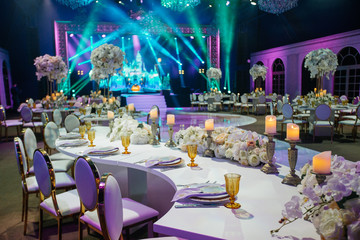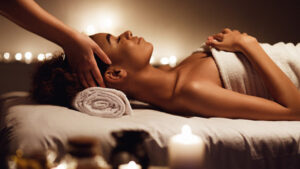DFW Event Design is transforming an event venue and making it a memorable place for attendees. It can include everything from the theme to choosing the best decor.
Event design also encompasses defining a purpose and goals for the event. It can be anything from an educational event to a celebration or charity fundraiser.
Event space planning is one of the most important aspects of event design. A good space plan will provide you with a to-scale representation of where everything in your event will go, such as stages, tables, chairs, AV equipment, furniture, dance floors, bars, booths and more. It will also help you understand whether your vision is actually viable – you don’t want to get to the build stage and realise that there simply isn’t room for everything you have planned!
Whether you’re hosting a corporate conference, wedding reception, gala or any other type of event, it’s important to consider the flow of people through the venue. Guests will be constantly moving throughout the day, finding their way to and from sessions, meeting up with friends and colleagues and looking for restrooms. Creating a clear flow of traffic through your event space will make for an easier and more enjoyable attendee experience.
Another essential aspect of an event space is its ability to adapt to a variety of different layouts. Features like movable walls and modular furniture allow venues to transform easily into a wide range of event types and themes. This flexibility can be a real asset for planners who are looking to bring new and unique events to their audiences.
Finally, an event space should be equipped with the latest in technology to support an innovative and forward-thinking event. This includes digital screens and projection capabilities, high-quality sound systems and flexible lighting. These features can help promote an event’s agenda and deliver engaging content while ensuring that attendees have a smooth and seamless experience.
Ultimately, the most important aspect of an event space is that it matches the overall tone and vibe of your event. For example, if you’re hosting a modern and trendy event for a younger crowd, you’ll probably want to select a venue with a similar aesthetic to amplify the vibe of your event. Similarly, if you’re hosting a classy and traditional event for a more mature audience, a classic-looking venue might be more appropriate. However, this is a personal preference, so feel free to explore and experiment with different options to find the best fit for your event.
Colour
Colour has a profound impact on the way we feel, so it’s important to understand how this can be used in event design. Much has been written about the psychology of colour, with various hues evoking certain feelings and attributes. For example, red can trigger a faster heart rate and appetite, while blue tones convey intelligence and trust. Using this knowledge, it’s possible to make subtle changes that will have a big effect on the overall atmosphere of an event.
For example, an industry event themed around a particular period can benefit from incorporating the colors associated with that era. This can help transport attendees and further immerse them in the experience. The color wheel is a helpful tool for this. It defines relationships between warm and cool tones and their various shades, tints, hues, saturation, and luminosity. By understanding these, you can fine-tune the color palette used for your event.
Besides the obvious use of colors in decor, it can also be incorporated into lighting to further fine-tune the energy and theme of an event. For example, a bold block color can be utilized in uplighting or a gobo to project the brand’s logo and reinforce branding at an event. Alternatively, core colors can be picked up in patterns to add interest to the space without overpowering it.
Color can also be used to bridge the gap between online promotional materials and on-site activities. For example, a distinctive color can be used in online graphics promoting an industry event’s keynote speaker and then carried over to the stage graphics, the keynote speaker’s slides, and even the room’s lighting.
The right use of color can help an event feel cohesive, organized, and more welcoming. Ultimately, this can lead to a more enjoyable and successful event.
The best event designers test their visual designs to ensure that they will have the desired impact on attendees. There are a few different ways to do this, but the most effective methods involve testing participants’ gut reactions to the designs. For instance, participants can be asked to compare multiple versions of a design, or they can be given open-ended questions about what they like and dislike about the design.
Lines
Creating an event involves more than just logistics. It’s about creating an immersive experience that leaves attendees with a sense of connection. The right mood, tone, and visual elements are vital to create an unforgettable experience that will resonate with attendees long after the event is over.
Lines are an important part of event design because they affect the proportions of a space. Using lines can make small spaces feel large and vice versa. For example, adding horizontal lines in the form of low hanging lights or a striped rug can draw the eye and bring a sense of balance to your venue. It’s also important to understand the lines of your venue or location so you can plan where furniture and decorations will go.
Texture is another element that can add a lot to an event’s design. Whether it’s actual texture (like a bouncy rubber floor) or visual texture, textures are a great way to engage your attendees physically. It’s also a great way to evoke emotion and set the tone for your event. For instance, if you’re planning an educational event, cool colors like greens and blues will help attendees focus. If you’re planning a celebratory event, warm colors like oranges and pinks will encourage conversation.
Shape is another event design factor that can be used to add drama and depth. It’s about how a space looks from different angles and how the elements in the room interact with each other. For example, using a variety of shapes and sizes of furnishings or adding in some unique sculptures will add interest and a sense of drama to your event.
Patterns are another event design element that can be used to add interest and texture. However, it’s important to use them sparingly so they don’t overwhelm the space. For example, if you’re planning an event with a floral theme, use the flowers to inspire your patterns rather than using an over-the-top animal print everywhere.
Lighting is an often overlooked aspect of event design, but it can be an excellent way to influence the mood and highlight focal points in your space. Experiment with different lighting to see how it impacts your event’s design. For example, directional lighting can be used to draw attention to your bar area or staged table settings.
Lighting
When it comes to event design, lighting is one of the most important factors. It can be used to highlight different elements of a space, create a mood and even control the flow of guests. With the right lighting design, you can transform any space into a spectacular experience that will blow your attendees away.
Lighting can also be used to create different lines in a room and alter the perceived size of the space. For example, if you have a large blank canvas area you can use lighting to create a sense of depth and dimension by using uplighters or pin spots to draw attention to particular areas. You can also play with different angles of lighting to change the perception of a space; lighting from below creates dramatic shadows while lighting from above can be soft and flattering.
Functional event lighting is always a must at any type of meeting, conference or convention. This includes basic stage lighting to brighten up presenters and speakers so they’re clearly visible for video recording or live streaming, as well as backlighting and wash lights to highlight certain areas of the venue or showcased products. This type of lighting can be hanged, rigged, placed on stands and even include Gobos (custom shaped lenses for the lights that add color or patterns to a wash or spotlight).
Decorative event lighting is also a popular choice to elevate an ordinary meeting or conference into something more special and memorable. By playing with the colour and intensity of lighting throughout the day, you can give your audience a completely different experience at each part of the program.
Event designers are responsible for designing the visual aspects of an event. They will plan and coordinate the overall look of the event, including signage, branding, and decor to ensure that it is cohesive and consistent with the event’s theme or atmosphere. They may also create mockups or prototypes to test their designs and analyze the results. This will help them find any flaws in their plans and make necessary adjustments.


